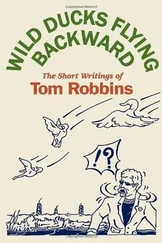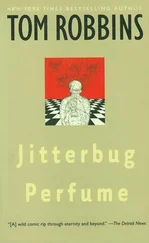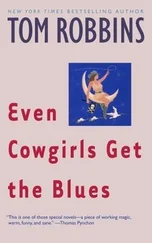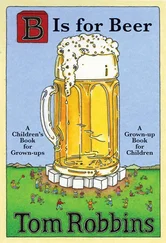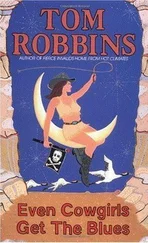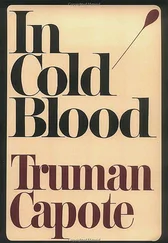The table and chair the bookshop had provided was from its children’s section, comfortable enough but quite low to the ground. The employee managing the line had decreed that the line stop six feet from where I sat. People with copies of Woodpecker to be signed were only permitted to approach me one at a time, or two if it was a couple. Because almost everyone wanted a bit of conversation as well as a signature, and because in order to make eye contact with me in my kiddie chair they were forced to squat, it gave the impression that they were kneeling before me.
The bookstore was on my right. On my left was a gas station, in whose parking lot, separated from the alleyway by a high chain-link fence, two or three Mexicans, attracted by the music and those luminous astro tortillas sweeping the sky, were watching with considerable interest. It wasn’t long before there were five or six Mexicans there, and then more than a dozen (the signing lasted four hours), staring at what they must have believed was some sort of high religious figure receiving homage from hundreds of the faithful. But what kind of bishop or saint was this, youngish, with long hair, a big lopsided mustache, wearing a flashy red-and-yellow sweater and fingers full of rings? To compound their perplexity, I would, from time to time, turn, raise my hand to them and genuflect in what by all appearances must have seemed the most heartfelt of blessings. They shook their heads and murmured to one another. Their bewilderment was almost palpable.
Toward the end of the evening, when I turned to “bless” the Hispanic gawkers one last time (by now there must have been twenty of them), I saw, standing in their midst with a grin that could have set off fire alarms all over town, Dr. Timothy Leary.
I’d met Tim Leary briefly during my sojourn in New York fifteen years earlier, but he didn’t recall it and there was no reason why he should: I’d been just a face in the group congratulating him after a lecture at Cooper Union. When he was incarcerated in Folsom, however, a fellow inmate — Sonny Barger, president of the notorious Northern California chapter of the Hells Angels — had pressed a copy of Another Roadside Attraction in his hands, saying, “This is the Angels’ favorite book.” (So who needs Kirkus Reviews ?) Tim had also become a fan. I rendezvoused with him that night after the gig at Papa Bach’s and we became friends.
There are those who have condemned Leary as a liar, a sellout, an opportunist, and most of all, a raging egomaniac; but the truth is, he was simply Irish. Like Ken Kesey and Robert Anton Wilson, two other iconically loquacious luminaries of the counterculture, Leary was Irish. Irish! He’d kissed the Blarney Stone. He’d French-kissed it, felt it up, rolled with it in the soft grass on the moonlit banks of the River Shannon. Figuratively speaking. Personally, I found him a generous, stimulating, entertaining, always upbeat companion, as full of challenging ideas, sincere flattery, and surprises as blarney. I never once heard him speak ill of anyone, including those who’d set him up and sent him to prison. No, I take that back. He was merciless in his condemnation of Abraham Lincoln, blaming Honest Abe for the rise of Wall Street and corporate fascism in America.
Sitting in his home one afternoon, not long after Tim and his wife Barbara had adopted a huge shaggy dog, I noticed on the coffee table a book entitled There Are No Bad Dogs, Only Bad Masters. When Tim was summoned to the phone, I picked up the book and was idly leafing through it, noticing that everywhere it said “no bad dogs,” Tim, with a black pen, had crossed out “dogs” and written in “drugs.” As in there are no bad drugs, only bad users.
Like many of Tim’s more playful pronouncements, this one needed to be rinsed for a while in the suds of sober reason. Certainly, the downfall of the sixties, that era of such promise and hope, was due in no small part to the misuse of potentially “good” drugs — such as LSD, psilocybin, and mescaline — by “bad” imbibers. When Time magazine published its cover story on the burgeoning psychedelic revolution, kids from Michigan, Illinois, and New Jersey, from all over blue-collar America; dissatisfied, rebellious kids from broken homes, inept schools, and boring communities, kids who heretofore would have been stealing hubcaps, cadging beers, crashing cars, and getting one another pregnant, flocked to the Haight-Ashbury to become hippies. Their guide to achieving hippiedom, to fitting into this youth-oriented utopia of unbridled freedom and joy, came (usually second- or thirdhand) from Time — and the Time article, although generally positive, got it wrong.
For example, one of the ways the early vanguard of psychedelica — predominately middle class, in its twenties, with at least some college education — expressed its freedom from social norms, its desire for a more natural lifestyle, was to go barefoot. Well, when you tread city sidewalks without your shoes, your feet get dirty pretty fast. Time ’s reporters noticed the grimy feet and deduced that these young people, like the beatniks before them, scorned bathing, whereas in point of fact the cliché “your body is your temple” was mouthed consistently in this milieu, whose members bathed ceremoniously, anointed themselves with perfumes and oils, and spent an inordinate amount of time dressing up, choosing their eclectic — and clean — costumes with as much care as a debutante selects her ball gowns. The new wave of Rust Belt and breadbasket kids, however, oblivious to the philosophical underpinnings of this movement they were naively embracing, took Time magazine at its word and thus the myth of the “dirty hippie” became a reality.
It should go without saying, then, that those same boys and girls lacked completely the intellectual, spiritual, and emotional maturity to gain much beyond anxiety and confusion from psychedelics, and Time was apparently incapable of even suggesting (as its older sister Life once had) that in the right circumstances and with proper preparation the experience might have been ecstatically revelatory instead. “Good drugs” perhaps, but “bad masters” all around.
On the other hand, friend Timothy to the contrary, I’d submit that there are some drugs that are intrinsically “bad.” There are, as far as I can see, no hidden virtues, no positive potential whatsoever in methamphetamines or crack, and I’d be inclined to include regular cocaine on the cur list, despite the sorry fact that I extolled the virtues of coke, my biggest regret as a novelist, in Still Life With Woodpecker . Saturday nights in 1978–1979, my beautiful, smart, witty, and thoroughly mendacious girlfriend Ginny Rose and I would sit at her dining room table in La Conner playing cribbage or Scrabble — and tooting lines of coke — until ten-thirty or eleven, then head to the 1890’s Tavern to dance to live music until closing time. I suppose it was because I only tooted once a week, and almost never at parties or in groups, that it took me so long to recognize the hairy truth that cocaine makes smart people stupid and stupid people dangerous. Bad.
Of course, Indians in the Andes have for centuries chewed coca leaves, the mother of cocaine, to relieve hunger pangs and give them needed energy for long treks and hard labor; one example, it seems, of good masters training a bad drug to wag its tail, guard the premises, and refrain from peeing on the rug.
Remembering Timothy Leary now, I’ll contend that even were he wrong about the neutrality of drugs (which sounds uncomfortably close to “Guns don’t kill people, people kill people”), even were he guilty of the character flaws attributed to him by his detractors, he still stacks up quite well when compared to those shallow, deluded, boring, self-righteous, and often self-appointed watchdogs who are all too willing, especially if there’s a buck involved, to stand guard at the gates of unauthorized mischief.
Читать дальше

